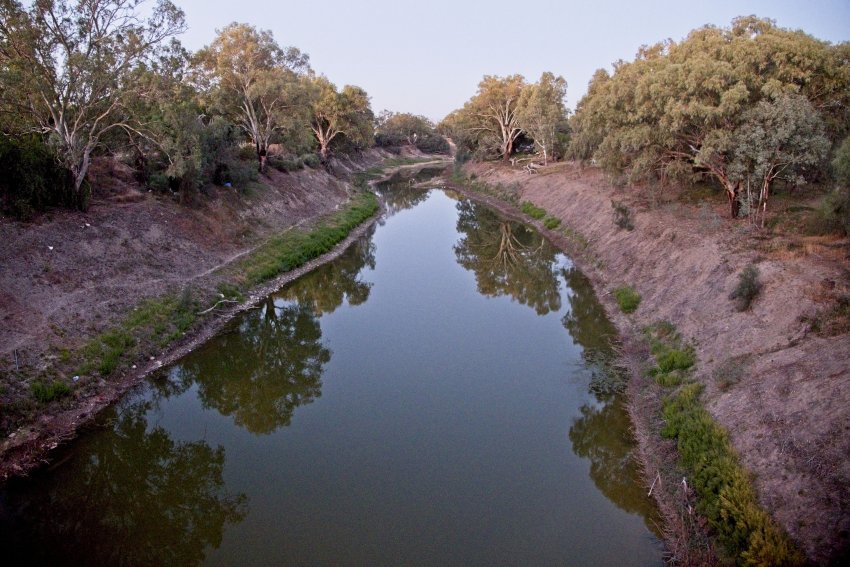
The 1991 Darling River crisis, which witnessed the world’s largest blue-green algal bloom, triggered what is known as the Water Reform in New South Wales. The reform sought to balance the needs of rivers and water extractors.
At the time, Inland Rivers Network (IRN) was formed to address the degradation of the basin’s rivers, wetlands and groundwater.
The Water Reform established a cap on water use across the basin. In NSW, the Water Act 1912 became the Water Management Act 2000, and water sharing plans established that a small share of water would be dedicated to rivers and wetland health.
Unfortunately, water use in NSW continued to rise.
Barely treated sewage was no longer dumped in inland rivers. But cotton farming, based on the use of the ancient method of flooded field irrigation, continued, especially in the Northern Basin.
The Millennium Drought, in the 2000s, triggered a crisis in the Lower Lakes and Coorong system at the mouth of the Murray. This led to the Federal Water Act 2007 and the Murray-Darling Basin Plan.
In NSW, growing awareness of dubious water use by corporation emerged. The 2017 ABC Four Corners program “Pumped” exposed the high level of water theft, mismanagement and corruption occurring in the state.
Various reviews and reports have pointed to the need for major structural change in the NSW government when it comes to water management. Unfortunately, the state water portfolio remains in the hands of the pro-irrigation industry National Party.
All major water storages in NSW were full in 2016. The reason they are now empty is not due to the drought, but because most of the water was allocated to the irrigation industry in 2017-18.
In 2014, state water minister Kevin Humphries amended water sharing plans so that water allocations would be based on the lowest inflows on record prior to 2004. This was when the major river system water sharing plans were gazetted. The NSW government chose to ignore the Millennium Drought when handing out water.
It is no surprise that the water supply to major inland towns like Dubbo and Tamworth is running out. The towns of Walgett, Wilcannia and Menindee ran out of water a long time ago, with Bourke hot on their heels.
We now also face a deeper, climate change-driven drought. This, combined with ongoing mismanagement and overuse of water, caused the major fish kills in the Darling River earlier this year.
This crisis brought worldwide attention to the state of NSW’s river systems. It also made many people realise that we should be doing something about the crisis, as water is the most essential natural resource we have.
Yet, the Coalition’s response to the drought has been to announce more dams along Darling River tributaries. The NSW government has essentially turned its back on far-western NSW.
So what can we do in the face of all this tragedy?
Firstly, IRN is concentrating on is overturning the work of Humphries and making sure water planning and allocation is based on the most recent inflow information. With the current drought, that is not much inflow at all.
Secondly, we are focused on making sure that, when it does rain again, not all the water is captured by empty storages across the inland. It is imperative that a first flush flow is protected to replenish water holes, fish refuges, wetlands and the river.
Thirdly, we must intervene intervene in the handing out of licences for floodplain harvesting. Floodplain harvesting is the capture of overland flows once rivers have broken their banks in flood. This water is captured by large channels and levee banks across floodplains in the Northern Basin and funnelled into huge on-farm storages.
This unregulated use of free water has been going on for more than 30 years. No one has any idea of the actual volume of water that is being siphoned off before it has a chance make it into the Barwon-Darling.
There is an attempt to model this volume with the aim of handing out new water licences as a regulatory tool. This is being undertaken with no assessment of the impacts this will have downstream on wetlands, groundwater systems or communities like Walgett, Brewarrina, Bourke and Wilcannia.
Water licences in NSW are a private property right, like land titles, that can be sold on the water market and mortgaged through the banking system. They have compensation rights under the Water Management Act. If rules in water sharing plans are changed so that the reliability of water access decreases, the people of NSW will have to compensate water licence holders for that loss.
Floodplain harvesting must be stopped before it is legalised.
The current government aim is to keep the business-as-usual scenario. This is failing. We need to keep the spotlight on water management so that our inland rivers, wetlands and far western communities have a fighting chance.
[Based on a talk given at a Nature Conservation Council discussion on water in Sydney on November 2.]